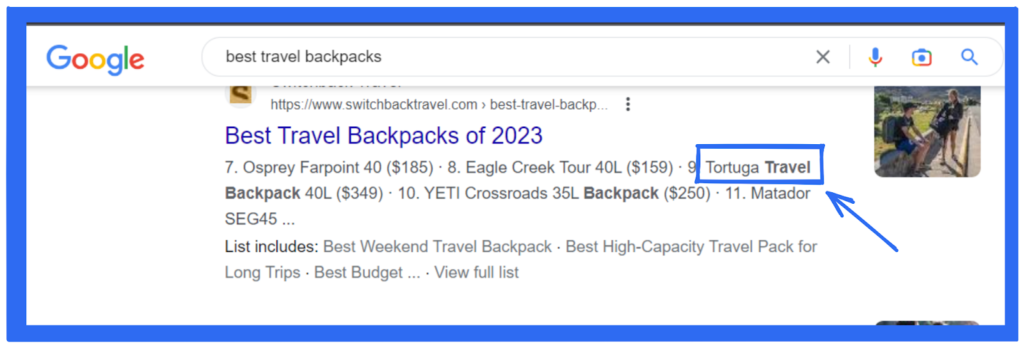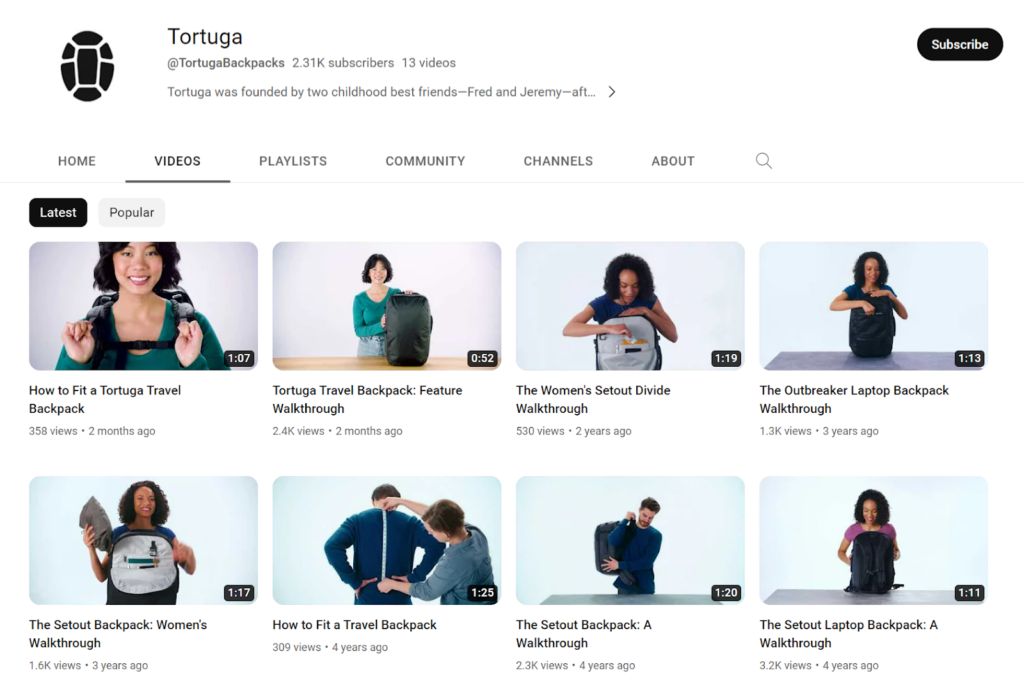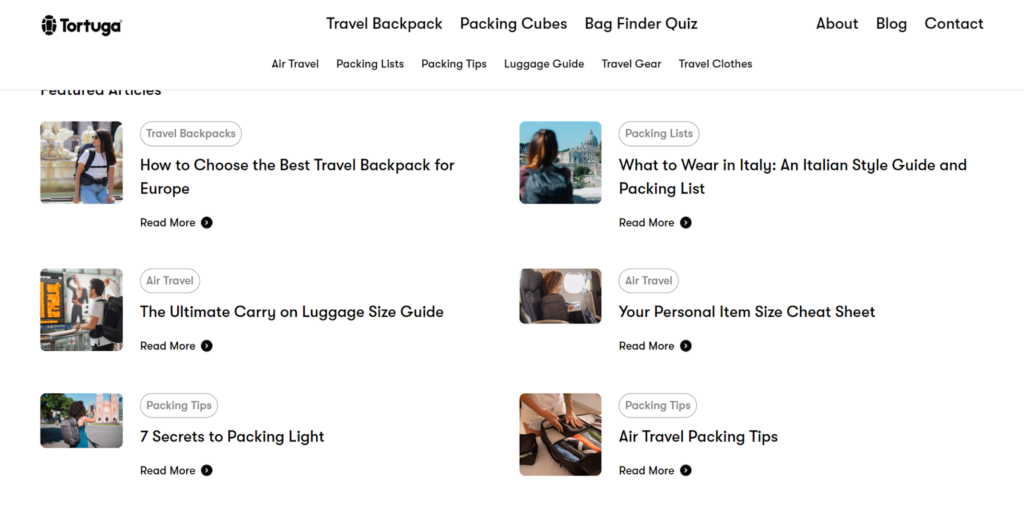Direct-to-consumer (DTC) brands have been growing in popularity over the years. In 2023, DTC ecommerce sales for established brands are expected to reach $161.22 billion.
And with customer acquisition costs posing a significant challenge for 66% of DTC companies in 2022, it’s time to rethink and revamp your acquisition strategies.
The race is on, and the stakes are higher than ever. EMarketer reported that 87.3 million U.S. consumers aged 14 and older were expected to purchase on a DTC platform in 2020 — a staggering 10.3% increase from the year before. So, how can your brand stay ahead of the curve and tap into the most effective customer acquisition channels in 2023?
What is the direct-to-consumer business model?
The direct-to-consumer (DTC) business model is a strategy where manufacturers or brands sell their products or services directly to the end consumers, bypassing traditional intermediaries such as wholesalers, retailers, or other third-party sellers. This model often relies on online channels, like a company’s own website or online marketplaces, to facilitate selling and distribution.
The DTC model allows businesses to have more control over their brand, pricing, customer experience, and profit margins, while also enabling them to collect valuable consumer data to better understand their customers and tailor their offerings accordingly.
What are customer acquisition channels?
Customer acquisition is the lifeblood of growth and success. But what exactly do we mean by “customer acquisition”?
Put simply, customer acquisition is the art of finding and leveraging existing and new channels that propel a brand’s growth.
— Deb Mukherjee, Head of Marketing, Numeral
In simple terms, customer acquisition is the process of attracting and converting prospects into paying customers. It involves reaching out to potential buyers, engaging them with your brand’s unique offerings, and ultimately persuading them to make a purchase.
Acquisition channels refer to the various DTC marketing channels, strategies, and platforms that businesses use to connect with and engage prospective clients.
These channels help companies target their desired audience, raise brand awareness, and convert potential customers into loyal followers.
After speaking with several DTC founders and marketers, we gained deeper insights into real-world customer acquisition strategies. The acquisition channels we discuss below are a compilation of the valuable lessons learned from experts that can be immediately applied to your brand to see results.
Top Customer Acquisition Channels for DTC in 2023
Let’s get right into the top customer acquisition channels for DTC. If you have only focused on one way to acquire customers you may want to try adding newer channels to your DTC strategy. We’ll start with one of the most popular channels out there—content.
1. Content Marketing: Building Authority and Trust
Ranking these days can be difficult considering how many updates Google has been rolling out. For DTC startups, establishing trust and authority is crucial for attracting and retaining customers. But, one of the best ways of creating a sustained growth engine is through content marketing.
A well-executed content marketing strategy can help you gain trust and position your brand as the authority in a niche.
In a recent conversation, Fred Perrotta, founder of Tortuga Backpacks emphasized the importance of content marketing as a core aspect of their overall marketing strategy. He said, “We focus a lot on SEO and content marketing.”
Instead of promoting Tortuga and keeping it front-and-center for all content, their focus is on creating useful and educational resources to help customers travel better. This customer experience-centric approach is missing from many DTC brands. They prioritize creating content around discounts, coupons, or other fillers which don’t add value to their customers’ lives and hence do not help with customer retention.
2. Affiliate Marketing Strategy: Expanding Reach and Boosting Conversions
As DTC brands seek to grow their customer base, an effective affiliate marketing strategy can play a significant role in expanding their reach and driving conversions. By collaborating with sites that rank well in search results, DTC brands can increase their online presence and drive more traffic to their websites.
Fred mentioned, “Our affiliate strategy is essentially an extension of that where we try to ‘own’
(or at least appear) in more of the search results by partnering with the sites that are already ranking.”
Through these partnerships, Tortuga has been able to appear on every page of search results for their target keywords, such as “best travel backpacks.”

By being mentioned in “best of” lists and other ranking articles, Tortuga not only increases its visibility but also reinforces its credibility in the eyes of potential customers.
Fred shared that their affiliate channel contributes to more than 15% of their assisted conversion value.
3. Branded Partnerships: Leveraging Complementary Brands for Growth
Derric Haynie, CEO and Co-Founder of EcommerceTech, sees branded partnerships as a key channel for brands to grow.
He defines it as “the idea of partnering with other ecommerce brands that complement your own, to create mutually beneficial relationships.”
These partnerships can take the form of co-marketing initiatives, bundled products, or even sharing each other’s audience. The main goal is to expand your reach and brand exposure to new customers who are more likely to be interested in your products or services.
Derric explains, “If you sell CBD dog treats, you find a brand that is selling dog leashes, or maybe patented dog leggings, and you can use these tools to easily reach out, secure a deal, add them to your site, and then hopefully also put together some co-marketing initiatives to pull from each other’s audience and grow each other’s socials, etc.”
There are multiple examples of strategic partnerships between large brands. Apple Watch and Nike partnered up to create the Apple Watch Nike+ exclusive edition watch. Fans of both brands automatically merge with this partnership giving the brands access to a larger market.
Such partnerships, if executed right, are usually a win-win situation for brands as well as customers.
4. Paid Search Advertising: Driving Targeted Traffic and Revenue Growth for DTC Brands
Elliot Davidson, the founder of Contrast, a digital marketing agency, highlights the importance of paid search advertising for DTC brands.
Demand capture, as Elliot explains, involves bidding on paid search ads for product and category terms. This can be executed through channels like Google, Bing, and marketplaces such as Amazon. By utilizing paid search ads, brands can target specific keywords and phrases that are relevant to their products, thus reaching potential customers who are actively searching for their solutions.
Elliot shares an example of how this approach has helped an eCommerce company reach significant revenue growth: “With this in mind, we are running paid search ads on the product terms like ‘Type 2 EV cable 5m for BMW’ to more broad terms like ‘EV Cables’. Taking this approach has helped this start-up eCommerce company close in on 7 figures annually.”
Niche queries like these have fewer searches per month compared to broader queries like “EV cable”. But queries like these are at the last step of the customer journey. The searcher already knows the problem and its solution and is looking to buy the product. Your conversions on these will be considerably higher than broad queries.
You can also target audiences coming from the paid channels and improve your conversions even further using automated discounts. With an app like Automatic Discounts & Gifts (ADG)
5. Demand Generation: Engaging Customers through Social Media Marketing
Elliot also emphasizes the role of demand generation in customer acquisition for DTC companies, particularly through social media platforms. Demand generation is the process of creating awareness and interest in a company’s products or services through various marketing channels, ultimately driving customer engagement and conversions.
According to Elliot, demand generation isn’t search-based but rather targeting-based through social media platforms like Facebook, TikTok, and Instagram. These platforms allow DTC startups to reach customers, build brand awareness, and ultimately drive sales.
He explains, “DTC brands by default start with their own site to drive customer acquisition. This is done through two main methods: demand generation and demand capture. Demand generation is more about targeting customers through social platforms like Facebook, TikTok, and Instagram.”
6. Customer-Led Growth and Referrals
Joseph Rosenfield, founder of therave.co, believes that focusing on “customer-led growth” is a viable channel for DTC brands to expand their reach. This approach prioritizes referral marketing, which has traditionally been overlooked due to its perceived ineffectiveness.
Joseph states, “I’m building TheRave.co, and we’re purely focused on ‘customer-led growth’ and really don’t see people mention referral as a viable channel because traditionally it hasn’t been done well.”
Joseph mentioned that encouraging satisfied customers to refer friends and family to the brand has been one of the most effective ways of generating leads for The Rave.
DTC businesses can generate organic growth and tap into the power of word-of-mouth marketing using this strategy.
There’s no better strategy than word-of-mouth. Make a product that your customers want to talk to friends about, give them a reason to bring up your brand within conversations, and you’ve built a self-sustaining growth machine for your DTC brand.
Ninad Pathak, B2B Content Marketer for SaaS tech and Shopify brands
And it not only helps reach new customers but also strengthens the relationship between the brand and its existing customers. To make this strategy even more effective, brands can offer exclusive discounts or referral bonuses to the most loyal customers.
7. Email Marketing: Providing Value and Building Relationships
Fred Perrotta emphasizes the importance of using email marketing effectively to provide educational resources and build stronger relationships with customers. Instead of sending discounts and filler emails, DTC companies should focus on creating valuable content that helps customers solve problems or improve their lives.
Fred shares, “In Q2, we’re focused on using our existing blog posts to provide useful, educational resources through our newsletter. I’m on a lot of email lists for research and see too many brands only sending discounts and pointless ‘filler’ emails. Those serve the brands’ needs. They aren’t for the customer. Instead, we want to repurpose the info in our blog posts into bite-sized emails to help our customers travel better.”
Repurposing blog content into engaging, bite-sized emails and sharing valuable insights made it easy for Tortuga to have a consistent stream of valuable content to share. With this strategy, you not only retain customers by consistently delivering value but also keep your brand on top of your customer’s minds.
8. Social Media Influencers: Boosting Brand Awareness and Trust through Authentic Advocacy
Influencer marketing has grown to become a significant channel. And DTC startups need to focus on this as a viable channel for growth. By partnering with social media influencers who have a strong following and align with the brand’s values, DTC companies can leverage the trust and authority these influencers have built with their audience.
Collaborating with influencers for product promotion can lead to increased brand exposure, higher engagement, and ultimately, more sales. Influencers can create content that showcases the product’s features and benefits, share their personal experiences, and even offer exclusive discounts or promotions to their followers.
This not only generates interest in the product but also creates a more genuine connection between the brand and potential customers.
Andrew Campbell, Head of Data Science at OpenStore, says, “Our OpenStore data shows that small Shopify merchants have seen the cost of impressions on Facebook rise by 25% over the past year and 100% over the past two years. In this competitive climate, the best brands will diversify their customer acquisition strategies and extend customer lifetime value through retention channels like SMS, email, and direct messaging on social media.”
For DTC startups looking to tap into the power of influencer marketing, it’s essential to identify influencers who share the same values and resonate well with the target audience. Furthermore, working with micro-influencers – those with a smaller but highly engaged audience – can be a cost-effective way to reach niche markets and build strong brand loyalty.
9. Community Building: Cultivating Brand Loyalty and Advocacy through Genuine Connections
As DTC brands seek to grow and maintain a loyal customer base while maintaining all the necessary legal and tax hurdles, fostering a sense of community around their brand becomes increasingly important. Building a strong community not only helps brands gain valuable insights into their customer’s needs and preferences but also creates an environment where customers feel heard, valued, and connected to the brand.
Community building can take many forms, such as engaging with customers on social media, creating dedicated forums or groups, organizing events, or even launching a brand ambassador program. Aerie launched the AerieREAL Ambassador program that brings together women that are passionate about Aerie and encourages them to share more on their social media accounts.
The key is to encourage open communication, collaboration, and sharing among customers and brand representatives, ultimately fostering a sense of belonging and loyalty.
By investing in community-building efforts, DTC brands can create long-lasting relationships with their customers, turning them into brand advocates who will help spread the word about the brand, ultimately driving new customer growth.
How to choose the best acquisition channels in DTC?
Selecting acquisition channels is, in part, determined by the specific products being sold and their price points.
Elliot, the founder of Contrast, highlights the importance of considering product and price points when selecting sales channels. He says, “Dependent on the specific products you are selling, the unit economic and price points will factor into the sales channels you’d be wanting to use.”
Higher-priced products, such as a £100 EV Cable that he helped grow through marketing, require a different approach than lower-priced items.
Customers are less likely to make an impulse purchase when the price is high. Instead, they may turn to search engines like Google to research and compare options before making a purchase.
In his example of the EV cable company, Elliot mentions that focusing on paid search ads targeting specific product terms, such as “Type 2 EV cable 5m for BMW,” can help capture customers actively looking for a solution to their problem.
On the other hand, lower-priced items may benefit from a broader marketing approach, utilizing social media platforms like Facebook, Instagram, and TikTok for demand generation.
Here are the considerations you need to make when picking the acquisition channels that you should go all-in on.
- Your target audience: Understand the demographics, interests, and needs of your potential customers. This will help you identify which channels are more likely to resonate with your target audience. For example, if your audience is predominantly active on social media platforms like Instagram and TikTok, demand generation through these channels could be an effective strategy.
- Your product or service: The nature of your product or service plays a crucial role in determining the most suitable acquisition channels. As we discussed earlier, the product’s price point affects the sales channels customers prefer. In his example of an EV Cable company, he found that customers turned to Google rather than marketplaces due to the higher price point.
- Your brand goals: Your acquisition channels should align with your company’s overall goals and objectives. For instance, if your goal is to grow your brand through partnerships and collaborations, consider Derric Haynie’s suggestion of branded partnerships.
- Your existing content: Assess the content and resources you already have, such as blog posts, product guides, or educational materials. You can leverage these assets in channels like email newsletters, as mentioned by Fred Perrotta. Repurposing existing content can save time and resources while also providing value to your customers.
- Your budget: Certain channels may require more resources or a higher budget than others. For example, paid search ads and influencer marketing can be more expensive than organic content marketing or referral programs. Evaluate the resources you have available and allocate them to the most effective channels for your brand.
- Your competition: Research competitors’ marketing strategies and identify any gaps or opportunities they might have overlooked. As Fred Perrotta mentioned, partnering with sites that rank well in search results can help you increase your online presence and claim a larger market share. This also increases the ROI from your SEO activities by giving you more backlinks.
As you dig further, the likelihood of finding better, higher-quality DTC customer acquisition channels, increases.
Unleash the Power of DTC Customer Acquisition
In the ever-evolving landscape of direct-to-consumer (DTC) marketing, staying ahead of the game by leveraging the most effective customer acquisition channels is critical for success. By embracing these acquisition channels, your brand can unlock growth and establish a strong presence in its respective markets.
One powerful tool that should not be overlooked is the implementation of automatic discounts and gifts through a discount app for your Shopify store. Apps like Automatic Discounts and Gifts not only incentivize customers to make purchases but also foster customer loyalty and encourage repeat business.
As you explore and implement these top DTC acquisition channels, keep in mind that your ultimate goal is to provide exceptional value to your customers and create meaningful connections that last. With the right strategies and tools, your DTC brand can soar to new heights and leave a lasting impact on your industry.
Which of these acquisition channels do you think will work best for your DTC brand in 2023 and beyond?



